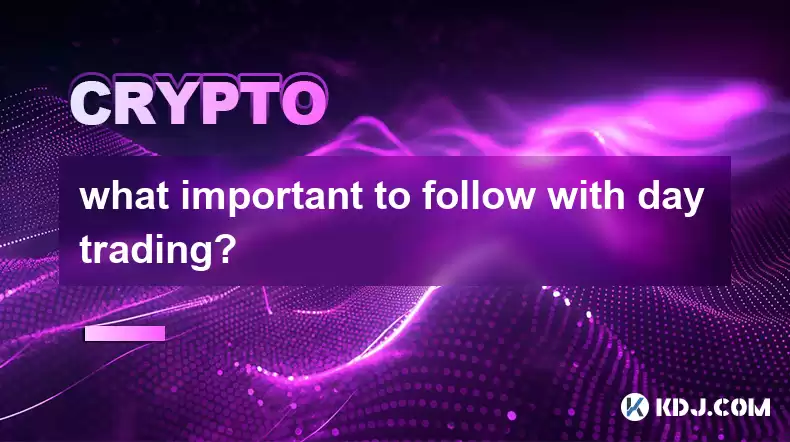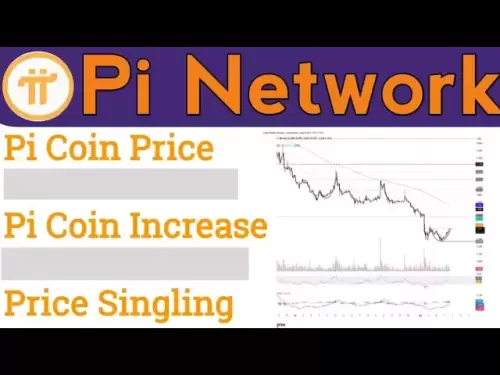-
 Bitcoin
Bitcoin $118300
1.01% -
 Ethereum
Ethereum $4215
0.69% -
 XRP
XRP $3.198
-3.83% -
 Tether USDt
Tether USDt $1.000
-0.01% -
 BNB
BNB $803.4
-0.53% -
 Solana
Solana $180.3
-0.67% -
 USDC
USDC $0.9998
-0.01% -
 Dogecoin
Dogecoin $0.2334
-1.49% -
 TRON
TRON $0.3394
0.86% -
 Cardano
Cardano $0.7980
-1.45% -
 Chainlink
Chainlink $22.19
6.65% -
 Hyperliquid
Hyperliquid $43.41
0.13% -
 Stellar
Stellar $0.4407
-3.13% -
 Sui
Sui $3.843
-2.24% -
 Bitcoin Cash
Bitcoin Cash $564.7
-3.74% -
 Hedera
Hedera $0.2588
-3.41% -
 Ethena USDe
Ethena USDe $1.001
0.00% -
 Avalanche
Avalanche $23.64
-3.37% -
 Litecoin
Litecoin $120.0
-4.01% -
 Toncoin
Toncoin $3.342
-1.11% -
 UNUS SED LEO
UNUS SED LEO $9.038
0.60% -
 Shiba Inu
Shiba Inu $0.00001347
-0.81% -
 Uniswap
Uniswap $10.69
-4.58% -
 Polkadot
Polkadot $4.034
-1.30% -
 Dai
Dai $1.000
0.01% -
 Bitget Token
Bitget Token $4.472
-1.52% -
 Cronos
Cronos $0.1571
-3.04% -
 Pepe
Pepe $0.00001207
-2.21% -
 Monero
Monero $273.8
-3.19% -
 Ethena
Ethena $0.7520
2.75%
what important to follow with day trading?
To become a successful day trader, it's essential to understand the underlying principles, master technical analysis, manage risk and emotions effectively, select the right trading instruments, develop a well-defined trading strategy, and gain experience through practice and continuous learning.
Feb 06, 2025 at 02:13 pm

Key Points
- Understanding the principles of day trading
- Mastering technical analysis
- Managing risk and emotions
- Selecting the right trading instruments
- Developing a trading strategy
- Practice and experience
Step 1: Understanding the Principles of Day Trading
Day trading is a fast-paced trading style where traders enter and exit positions within the same trading day. Unlike long-term investors who hold positions for extended periods, day traders capitalize on short-term price fluctuations. To succeed in day trading, it's essential to grasp its fundamental principles:
- Leverage: Day traders often utilize leverage to amplify their returns, but excessive leverage can also amplify losses.
- Volatility: Day traders seek markets with high volatility, as it provides more opportunities for profit.
- Liquidity: Markets with high liquidity allow traders to enter and exit positions quickly and efficiently.
- Technical Analysis: Day traders rely heavily on technical analysis to identify trading opportunities based on price action and chart patterns.
- Risk Management: Risk management is paramount in day trading, as losses can accumulate rapidly. Traders must establish clear stop-loss levels to limit potential downside.
Step 2: Mastering Technical Analysis
Technical analysis plays a pivotal role in day trading, providing traders with insights into market trends, price levels, and trading patterns. To master technical analysis, consider the following:
- Chart Patterns: Familiarize yourself with a variety of chart patterns, such as triangles, wedges, and head and shoulders, that can indicate potential price movements.
- Indicators: Utilize technical indicators like moving averages, oscillators, and volatility indicators to identify trend strength, overbought/oversold conditions, and market momentum.
- Trend Analysis: Study methods for identifying and trading with the current market trend, which can provide guidance for your entry and exit points.
- Support and Resistance Levels: Identify areas of support and resistance on price charts, as these levels often act as magnets for price action and can provide trading opportunities.
Step 3: Managing Risk and Emotions
Risk management and emotional control are indispensable elements of day trading success. Implement these strategies to mitigate risk and avoid costly mistakes:
- Stop-Loss Orders: Place stop-loss orders to automatically close positions when prices move against you, limiting potential losses.
- Position Sizing: Determine an appropriate position size that aligns with your risk appetite and account balance.
- Discipline: Adhere to your trading strategy and resist the urge to deviate from it based on emotional impulses.
- Mental Preparation: Develop a clear trading mindset and prepare yourself for both profits and losses.
Step 4: Selecting the Right Trading Instruments
Choosing the appropriate trading instruments is crucial for day trading success. Consider the following factors:
- Volatility: Select markets with sufficient volatility to generate profitable trading opportunities.
- Liquidity: Ensure that the markets you trade in have high liquidity to facilitate quick execution of trades.
- Commission Structure: Factor in trading commissions and spread when evaluating trading instruments.
- Accessibility: Consider the availability of trading instruments on your brokerage platform.
Step 5: Developing a Trading Strategy
A well-defined trading strategy provides a roadmap for your day trading endeavors. Follow these steps to develop a sound strategy:
- Define Your Goals: Determine your profit targets, risk tolerance, and trading time frame.
- Analyze the Market: Identify market trends, support and resistance levels, and potential trading opportunities.
- Establish Entry and Exit Points: Develop clear criteria for entering and exiting trades based on technical analysis and market conditions.
- Test and Optimize: Backtest your strategy on historical data or using a demo account to refine and optimize it.
Step 6: Practice and Experience
Day trading requires practice and experience to refine your skills and gain confidence. Implement these strategies to enhance your trading proficiency:
- Trade with a Demo Account: Use a demo account to practice your strategies in a risk-free environment.
- Journal Your Trades: Keep a record of your trades, including entry and exit points, rationale, and results.
- Seek Mentorship: Consider seeking guidance and support from experienced day traders or trading educators.
- Attend Webinars and Workshops: Participate in webinars and workshops to expand your knowledge and connect with other traders.
FAQ
Q: What are the most important qualities for a successful day trader?
A: Discipline, risk management skills, technical analysis proficiency, and emotional control.
Q: How much capital do I need to start day trading?
A: It depends on your risk tolerance and trading strategy, but it's generally recommended to start with a small amount of capital.
Q: What are the common mistakes made by day traders?
A: Overleveraging, trading without a strategy, succumbing to emotions, and ignoring risk management principles.
Q: What are the most popular day trading strategies?
A: Scalping, range trading, breakout trading, and momentum trading are common day trading strategies.
Q: Can day trading be profitable?
A: Yes, day trading can be profitable, but it requires skill, dedication, and a clear understanding of the risks involved.
Disclaimer:info@kdj.com
The information provided is not trading advice. kdj.com does not assume any responsibility for any investments made based on the information provided in this article. Cryptocurrencies are highly volatile and it is highly recommended that you invest with caution after thorough research!
If you believe that the content used on this website infringes your copyright, please contact us immediately (info@kdj.com) and we will delete it promptly.
- Cardano, Returns, and Trade Deals: A New Yorker's Take
- 2025-08-10 18:50:16
- Dogwifhat's Comeback: Solana Meme Coin Mania and Beyond!
- 2025-08-10 18:30:15
- Solana vs. Ethereum: The Meme Coin Throwdown and the Rise of Layer Brett
- 2025-08-10 19:10:16
- Solana, Exodus, and Tokenization: A New Era for Equity?
- 2025-08-10 18:50:16
- Bitcoin, Chainlink, and Crypto: What's the Hype?
- 2025-08-10 19:10:16
- Trump, Crypto, and Treasury Companies: What's the Deal?
- 2025-08-10 19:15:16
Related knowledge

What is Ethereum’s Slashing mechanism and how to punish malicious behavior?
Feb 20,2025 at 03:08am
Key PointsOverview of slashingDifferent types of slashing in EthereumIncentives and consequences of slashingIdentifying and reporting slashed validato...

What is the verifier node of Ethereum and how to become a verifier?
Feb 19,2025 at 06:00pm
The Verifier Node of Ethereum: A Comprehensive GuideKey Points:What is a Verifier Node?How to Become a Verifier NodeResponsibilities and Rewards of a ...

What is Ethereum’s staking, and how to participate and earn money?
Feb 19,2025 at 04:37pm
Key Points:Understanding Ethereum's Staking MechanismSteps to Participate in StakingBenefits and Rewards of StakingSecurity and Risk ConsiderationsTec...

What is Ethereum’s DAO (Decentralized Autonomous Organization) and how does it work?
Feb 20,2025 at 03:12am
Key PointsDefinition and Structure of a DAOGovernance and Decision-Making in DAOsBenefits and Use Cases of DAOsChallenges and Limitations of DAOsWhat ...

What is Ethereum's multi-signature wallet and how to improve security?
Feb 20,2025 at 02:18pm
Key Points:Understanding the Concept of a Multi-Signature WalletBenefits and Drawbacks of Multisig WalletsRequirements for Setting Up a Multisig Walle...

What is Ethereum's oracle and how to provide data for smart contracts?
Feb 21,2025 at 01:30am
Key Points:Understanding the concept of oracles in EthereumExploring different types of oraclesDetailed guide on how to provide data for smart contrac...

What is Ethereum’s Slashing mechanism and how to punish malicious behavior?
Feb 20,2025 at 03:08am
Key PointsOverview of slashingDifferent types of slashing in EthereumIncentives and consequences of slashingIdentifying and reporting slashed validato...

What is the verifier node of Ethereum and how to become a verifier?
Feb 19,2025 at 06:00pm
The Verifier Node of Ethereum: A Comprehensive GuideKey Points:What is a Verifier Node?How to Become a Verifier NodeResponsibilities and Rewards of a ...

What is Ethereum’s staking, and how to participate and earn money?
Feb 19,2025 at 04:37pm
Key Points:Understanding Ethereum's Staking MechanismSteps to Participate in StakingBenefits and Rewards of StakingSecurity and Risk ConsiderationsTec...

What is Ethereum’s DAO (Decentralized Autonomous Organization) and how does it work?
Feb 20,2025 at 03:12am
Key PointsDefinition and Structure of a DAOGovernance and Decision-Making in DAOsBenefits and Use Cases of DAOsChallenges and Limitations of DAOsWhat ...

What is Ethereum's multi-signature wallet and how to improve security?
Feb 20,2025 at 02:18pm
Key Points:Understanding the Concept of a Multi-Signature WalletBenefits and Drawbacks of Multisig WalletsRequirements for Setting Up a Multisig Walle...

What is Ethereum's oracle and how to provide data for smart contracts?
Feb 21,2025 at 01:30am
Key Points:Understanding the concept of oracles in EthereumExploring different types of oraclesDetailed guide on how to provide data for smart contrac...
See all articles

























































































